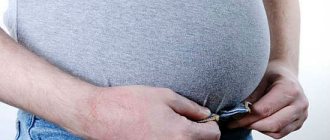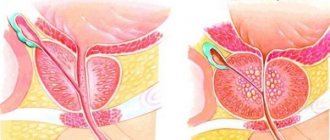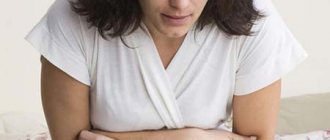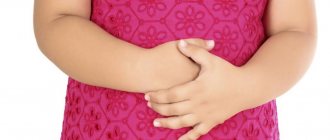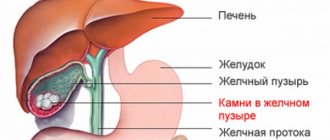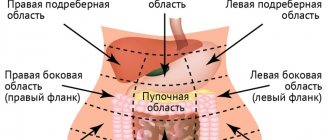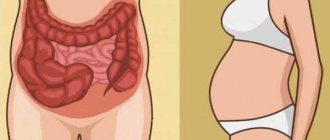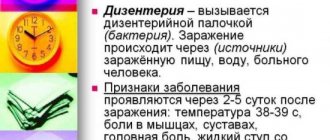Girdle pain in the stomach area is a characteristic symptom of many diseases that can occur in both acute and chronic forms. Absolutely every person encounters this symptom, including females during pregnancy. Despite the fact that such a manifestation often indicates the presence of some kind of illness in the body, shingles pain often manifests itself against the background of physiological causes.
- Etiology
- Classification
- Symptoms
- Diagnostics
- Treatment
- Prevention
Pain syndrome never acts as the only symptom; it is complemented by the most characteristic signs of gastrointestinal diseases, including nausea, vomiting, constipation, diarrhea, belching and heartburn.
To find out the reasons for the occurrence of such a sign, it is not enough to rely only on clinical manifestations, so clinicians need data from laboratory and instrumental examinations. Treatment tactics are determined individually for each patient.
Etiology
A wide range of factors can cause girdle pain in the stomach and abdomen, which clinicians divide into two large categories - pathological and physiological.
The first group consists of the following diseases:
- pancreatitis, characterized by inflammatory damage to the pancreas. In such cases, the pain is sharp and acute, but the intensity decreases significantly in a sitting or lying position;
- ulcerative lesions of the duodenum or stomach;
- myocardial infarction - in cases of an atypical course of the disease, the pain syndrome is localized in the stomach and over time becomes encircling in nature. Such a pathology can be life-threatening, and the atypical localization of pain greatly complicates the establishment of a correct diagnosis;
- inflammation of the appendix;
- duodenitis;
- acute cholecystitis;
- osteochondrosis affecting the thoracic spine;
- aortic aneurysm;
- pathologies of the urinary system - in this case, patients complain of such a symptom as girdle pain in the lower back;
- choledocholithiasis;
- radicular syndrome - pain develops from the thoracic region, after which it spreads to the entire abdomen and lower back;
- hepatic colic and other liver damage;
- gallbladder dysfunction.
Such conditions cause girdling pain syndrome, as well as pain in the lower abdomen in both men and women. However, it is worth highlighting those situations that are typical only for the fairer sex:
- diseases of a gynecological nature - this includes endometritis and endometriosis, as well as various neoplasms of the reproductive system. In such cases, the main symptom will be aching in nature;
- the course of menstruation;
- the period of bearing a child, and such a symptom can occur both in the early and late stages. In the first case, girdle pain may indicate spontaneous termination of pregnancy, in the second - it is often a consequence of the active intrauterine growth of the baby or indicates the onset of labor. In any case, the expression of such a sign requires seeking advice from an obstetrician-gynecologist.
In addition to pathological conditions, girdle pain in the stomach and back can result from:
- prolonged exposure to stressful situations;
- severe physical stress;
- poor nutrition.
Possible causes of abdominal pain
Causes of pain in the back and stomach
There are somatic and visceral pain syndromes; the first includes pain that appears when the abdominal cavity is irritated if the disease has already affected the spinal cord. They are characterized by a point location and sharpness.
Visceral pain bothers the patient if the nerve fibers in the internal organs are irritated, are closely related to spasms, stretching, manifest themselves in the form of colic, have a girdling nature, and radiate to other parts of the body.
Food is often the trigger. The esophagus becomes irritated when the thermal regime is violated - eating very hot or cold foods; those who abuse salty foods are also at risk. The cause of biliary colic is considered to be the presence in the diet of fatty foods rich in bad cholesterol.
Expert opinion
Sevastyanov Roman
General practitioner, hepatologist, gastroenterologist, highest qualification category. Site Expert
Sometimes cramps occur after consuming dairy products, which is associated with lactose intolerance or the development of pathology; discomfort is accompanied by bloating and diarrhea. Pain can also occur as a result of drinking alcohol or taking antibiotics.
The list of pathological abnormalities, which are characterized by pain in the abdomen and back, includes:
- disturbances in the functioning of the digestive system;
- poisoning, infections;
- inflammatory processes;
- kidney disease;
- damage to the abdominal walls;
- pinched spine;
- rheumatism;
- disturbances in the functioning of the cardiovascular system;
- pneumonia.
It is not always possible to determine the exact cause of pain by its location. Only in classical situations the source of discomfort is located in the same place as the diseased organ.
The relationship between pain and its location with the source of its occurrence is as follows:
- Lower belly. Indicates problems with the urinary system. In women, similar discomfort occurs during menstruation, during pregnancy, and during inflammatory processes of the genital organs. If there is an ectopic pregnancy, pain is accompanied by vaginal bleeding.
- In the center of the belly. It is observed in women in the early stages of pregnancy. This is due to hormonal changes. Pain is felt in the abdomen and lower back. Minor discomfort in this area is sometimes associated with poor nutrition, dysbacteriosis, or increased stress on the spine.
- In the projection of the stomach. Occurs with pathologies of the esophagus and intestines. Sometimes pain is closely associated with dysfunction of the respiratory system, kidney inflammation or heart attack. If discomfort is localized near the navel, this indicates diseases of the small intestine. With inflammation of the pancreas during an exacerbation, the pain also radiates to the shoulder and collarbone. The pathological condition is accompanied by nausea. If pain appears after eating, a gastric ulcer is suspected.
- Iliac region. If it hurts on the right side, there is a suspicion of appendicitis or problems with the cecum. With pain on the left, the sigmoid colon is affected. When pain in the abdomen is girdling in nature, this indicates the presence of kidney stones. Then the pain radiates to the genitals, to the legs, at the same time the process of urination is disrupted, and increased gas formation and nausea are disturbing. Renal colic can sometimes be confused with gastrointestinal diseases due to similar sensations.
- Upper right part. Discomfort in this area is associated with strangulation of a stone in the gall bladder. Then the pain is sudden, increasing, and can radiate to the neck, back, or collarbone.
Expert opinion
Sevastyanov Roman
General practitioner, hepatologist, gastroenterologist, highest qualification category. Site Expert
If the pain syndrome is intense, the patient should not be given anything to drink or take medications until the ambulance arrives.
Classification
It is quite difficult for the patient to identify the localization of pain that is girdling in nature, but the nature of the manifestation of pain is easily determined. Thus, pain occurs:
- sudden;
- sharp;
- colicky;
- constant;
- acute;
- cramping;
- aching;
- cutting.
Depending on the time of onset of pain in the abdomen and lower back, they are expressed:
- after eating food;
- during meals;
- on an empty stomach;
- at night - considered the most dangerous sign.
Diseases that cause discomfort
The causes of abdominal pain in women can be the following: endometriosis, adnexitis, colpitis, candidiasis and trichomoniasis. With adnexitis, chronic inflammation in the tubes and ovaries often causes discomfort in the abdominal area. Infectious processes in the vagina and tumors also lead to unpleasant sensations: fibroma, polycystic disease, cervical cancer.
A critical situation occurs when a cyst, tumor, rupture or torsion, or fibroma disintegrates. In this case, acute pain appears, which is accompanied by nausea, hyperthermia and vomiting. These symptoms indicate the development of peritonitis. In this case, only surgery will help save the woman’s life. Girdle pain in the abdominal area in men is quite often a symptom of prostatitis.
Symptoms
Girdle pain in the back and abdomen acts as the first symptom, against which other clinical manifestations develop. Additional symptoms may include:
- constant nausea accompanied by profuse vomiting, which rarely brings relief;
- heartburn and belching;
- unpleasant taste in the mouth;
- temperature increase;
- severe headaches;
- bloating;
- increased gas formation;
- intense dizziness;
- alternating constipation and diarrhea;
- decreased or complete lack of appetite;
- weakness and lethargy;
- general malaise and decreased performance;
- the spread of pain not only to the lumbar region, but also to the shoulder blades, arms, shoulders and neck;
- apathy and depression.
In cases where girdle pain in the abdomen appears due to liver damage, more specific symptoms may appear. For example:
- the appearance of rashes of unknown etiology on the skin;
- severe skin itching;
- change in the color of stool and urine;
- yellowness of the skin and mucous membranes.
Pain in the abdominal cavity in women
Quite often, discomfort in the fairer sex occurs due to premenstrual tension. Girdle pain in the abdominal area may appear several days before the start of the cycle or even during it. Such consequences are caused by changes that occur in the uterus. During this period, the organ tenses and increases in size, so the woman begins to experience aching pain in the lower abdomen.
This condition is usually accompanied by increased nervousness and irritability. In some cases, the pain becomes cramping as a result of active contraction of the uterus.
Diagnostics
Treatment of pain in the lower back and stomach area cannot be carried out without identifying the etiological factor - laboratory and instrumental examinations are used for this. However, before their implementation, the gastroenterologist must perform several manipulations:
- interview the patient about the severity of additional symptoms and girdle pain in the lower abdomen simultaneously with the lumbar region;
- study the history of the disease and the patient’s life - can accurately indicate the cause of pain in the abdomen and back;
- conduct a thorough objective examination, including palpation of the abdomen, as well as examination of the condition of the skin and sclera.
Laboratory examinations are aimed at performing:
- general and biochemical blood test;
- general urinalysis;
- microscopic examination of feces.
To confirm the diagnosis, it is necessary to perform instrumental examinations, including:
- radiography;
- Ultrasound of the abdominal organs;
- FEGDS - to assess the condition of the inner surface of the esophagus, stomach and duodenum;
- CT and MRI – to obtain a detailed image of the digestive system;
- biopsy.
Carrying out FEGDS
Adnexit
This disease is determined by the presence of an extensive inflammatory process , which involves the fallopian tubes and appendages. Inflammation is caused by pathogenic bacteria such as:
- gonococci;
- fungi;
- viruses;
- staphylococci;
- streptococci.
Statistics show that those women whose immunity is constantly suppressed are at risk.
Also a negative factor is the frequent change of sexual partner, lack of proper hygiene and violent sexual intercourse. Type of pain : Bursting, squeezing, encircling pain. Pain syndrome may be associated with:
- weakness;
- heat;
- menstrual irregularities;
- fever.
Localization Right or left (sometimes both at once) part of the lower abdomen, radiating to the lower back and groin. Diagnosis Initially, the woman is asked about her condition, specifying the type of pain, location and duration. Next, the examination is carried out on a gynecological chair using mirrors. Palpation reveals the presence of enlarged ovaries, which causes acute pain in the patient.
It is necessary to examine smears for pathogenic microflora, as well as donate urine and blood for the presence of the causative agent of the inflammatory process.
Ultrasound is used to determine the extent of inflammation.
Treatment Based on the test results, an appropriate antibiotic is selected that can suppress the activity of pathogenic microflora in the ovaries and tubes. Antibacterial therapy is supplemented with drugs such as:
- Vaginal suppositories that relieve heat, pain and inflammation.
- Immunostimulants that allow you to stimulate the body’s own cells.
- Vitamin complexes that help strengthen the immune system.
- Analgesics that relieve acute pain.
At the time of treatment, it is important not to overcool, and also to avoid visiting public places with high humidity: saunas, steam baths, swimming pools.
Treatment
If, in addition to stomach pain, some of the above symptoms are observed, then you need to call an ambulance as soon as possible, and before the doctor arrives, follow the first aid rules:
- ensure complete rest and horizontal position for the victim;
- apply cold to the lower abdomen;
- drink still water;
- take an antispasmodic substance only if there is severe and sharp girdling pain;
- call an ambulance or take the patient to a medical facility.
Prohibited actions include:
- eating;
- applying warm compresses - this can only aggravate an already serious condition;
- performing enemas and taking laxatives.
In a medical institution, after reviewing the results of all examinations, the gastroenterologist draws up an individual treatment tactic for each patient for girdle pain in the lower back and lower abdomen. In all cases, treatment consists of the following measures:
- taking medications;
- maintaining a gentle diet;
- physiotherapeutic procedures;
- use of traditional medicine recipes.
Drug treatment can be aimed at using:
- antispasmodics and enzyme substances;
- antacids;
- diuretics;
- neuroleptics and thrombolytics - for myocardial infarction;
- litholytics - for dissolving small stones;
- antibacterial drugs.
Surgery is performed if:
- the use of conservative methods was unsuccessful;
- The cause of the girdle pain was the formation of stones, an oncological process or emergency conditions.
How to behave?
When girdling pain appears in the stomach and back, you need to determine its nature and additional symptoms. Often patients begin to treat, for example, lower back pain with medications to relieve pain. Not only will it be of no use. Taking the wrong medications can make the problem worse by masking the cause.
- In no case should you take medications on your own if you experience girdle pain, much less apply a heating pad to the sore spot. You need to see a doctor urgently. If the pain is very severe, you need to call an ambulance.
- While you are waiting for the doctor, you need the patient to take a comfortable lying position and remain completely calm.
- In the hospital you will need to undergo a comprehensive examination and undergo tests. This is necessary for a correct diagnosis.
- Next, depending on the disease, you will be prescribed a treatment method. It can be surgical or medical with medications, diet and bed rest.
Instead of treating shingles in the abdomen and back, it is better to prevent them. Seemingly simple recommendations will help you maintain your health. Eat right, lead a healthy lifestyle, don’t get nervous, practice good hygiene and, if any unpleasant symptoms appear, consult a doctor.
Prevention
To avoid the appearance of girdle pain in the back and abdomen, you must follow general rules, since there are no specific preventive measures. Among the recommendations it is worth highlighting:
- complete renunciation of addictions;
- maintaining a moderately active lifestyle;
- avoiding emotional and physical fatigue;
- proper and balanced nutrition;
- daily walks in the fresh air;
- visiting an obstetrician-gynecologist at the slightest change in health - applies only to pregnant women;
- regular medical examination.
Only early detection and comprehensive treatment of diseases that cause girdle pain can guarantee a favorable prognosis. Otherwise, there is a possibility that this or that disease will lead to the development of complications that can be life-threatening for the patient.
Ovarian tumor
Benign neoplasms on the surface of the ovary (cysts) are less dangerous , but malignant ones, in which healthy epithelial cells degenerate into cancerous ones, are difficult to treat. There are many reasons for the development of ovarian cancer, but the most common are related to heredity and hormonal imbalance. Type of pain The increase in pain is directly related to the increase in tumor size.
The pain is aching, bursting, and intensifies when turning.
Localization Area of the left or right hypochondrium, lower back. Diagnostics During the initial examination, palpation assesses the size of the ovary, which, in the presence of a neoplasm, is enlarged several times.
Oncology affects the cycle, so it is important to collect anamnesis by interviewing the woman about the duration of the cycle and personal feelings. Article on the topic: Why does the pubic bone hurt during pregnancy and after childbirth?
Ultrasound helps to visualize the tumor, and to clarify its type and type, an MRI of the pelvic organs may be required.
Treatment In the early stages, all possible measures are taken to preserve the ovary. For these purposes, laser therapy, cryodestruction and laparoscopy are used. In advanced stages of cancer, complete resection of the ovary along with the fallopian tube may be required.
Main reasons
The causes of girdle pain can affect different areas: the gastrointestinal tract, spine, internal organs, gynecological diseases. In some cases, symptoms are caused by other factors. For example, taking certain medications (Aspirin, Ibuprofen, Naproxen), antibiotics, laxatives, and during severe physical exertion.
From the gastrointestinal tract
One of the main diseases is small intestinal ulcer . Pathology appears due to increased acidity and gastritis. Factors that provoke ulcers include rough food, bad habits, hereditary predisposition, and taking non-steroidal drugs. Girdle pain occurs mainly after eating in the upper abdomen and spreads in a circular manner.
Perforation of the gastric walls is accompanied by pain in the navel area. Then the pain spreads throughout the abdomen and is stronger in the left side. There is no nausea, but severe pallor and rapid breathing appear. Negative sensations radiate to the back.
Gastroduodenitis, gastritis . The disease is characterized by acute girdle pain, and in chronic pathology, symptoms occur periodically and intensify with exacerbation. In this case, the sensations begin to diverge in a straight line - through the stomach, and then radiate to the left region of the back.
In internal organs
The most common cause of girdle pain is appendicitis . In this case, the symptoms arise in the navel area, then radiate down the abdomen, spread to the right side and become encircling and gradually gain strength. Other diseases of internal organs:
- Pancreatitis . This is an inflammation of the pancreas. The pain (often burning) spreads to the stomach and back, more severely to the right side. May radiate to the heart. Symptoms worsen at night.
- Thrombophlebic splenomegaly .
- Hepatic colic appears against the background of the formation of stones in the kidneys. As a result, a strong pain appears in the right side. Then it “spreads” through the stomach and back, affecting the shoulder blades, neck and shoulders.
- pyelonephritis is accompanied by nagging or cutting pain, which appears in the form of attacks. The same symptoms appear when urinating. Similar symptoms may occur with other renal diseases, as well as with hemorrhagic vasculitis.
- Diseases of the gallbladder, mainly cholecystitis . The symptoms are similar to hepatic colic, differing only in the manifestations. It starts on the right side of the back, then spreads under the ribs and then to the stomach. Can be handed over. When tapping or pressing, the pain is felt all over the back, intensifies during inhalations, when bending, raising the right leg, and radiates to the lower back.
- Pneumonia may also be accompanied by girdling pain. Moreover, it can radiate down the abdomen and move to the back area. Symptoms differ from gastrointestinal pathologies by their absence during movement.
- Damage to the walls of the abdominal cavity, its inflammation, that is, peritonitis .
Malignant tumors can appear in any organ and affect nearby ones. In this case, a strong aching girdle pain appears. It is also characteristic of the process of metastasis.
Heart problems
Girdle pain occurs with heart disease. For example, during a heart attack, it envelops the body completely, but is more clearly manifested on the left in the chest, arm, ribs, shoulder blade and neck. Cardiovascular diseases accompanied by circulatory disorders may also be the cause.
The symptoms can be confused with other diseases, but if you do not call an ambulance, death can occur.
Spine pathologies
Girdle pain often accompanies diseases of the spine. All its departments are associated with specific bodies. Therefore, having arisen in one place, the symptoms begin to spread to others. With osteochondrosis, the pain is acute and occurs when turning, moving, or lifting heavy objects.
Other pathologies of the spine include neuropathies, when the nerve roots are affected (pain occurs in the form of spasms), rheumatism, hernias and damage to the discs, and disruption of the musculoskeletal system. Symptoms also appear due to injuries and fractures.


